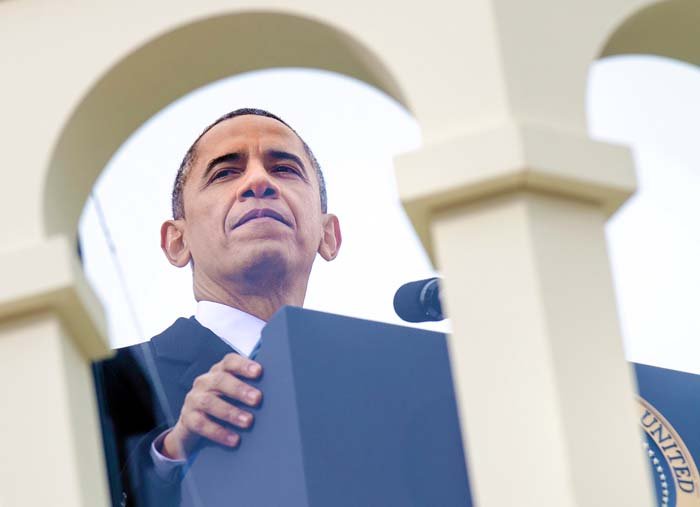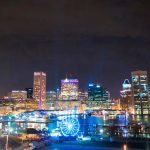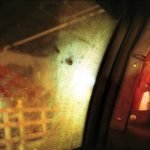+ By Brenda Wintrode + Photos by Joshua McKerrow
Physical art involves manipulating a medium to manifest an internal vision. The painter meticulously stains a canvas; the image emerges to the foreground. The sculptor hammers, glues, staples, molds clay, metal, or perhaps fiber to express a statement. The photographer, however, balances the position of the camera with elements outside of it: light, subject, background, emotion. With perception and intuition, he judges the time to press the shutter, as if catching a firefly in a jar. Time, space, and light—never to be represented in that same way again—are contained in a finite image.
 Photojournalist Josh McKerrow describes what it feels like to capture the essence of a moment with his camera: “There are times when I just sync up to the universe, and it’s very peaceful.” The Capital Gazette photographer explains what is known in his profession as The Decisive Moment, when the photographer captures the truest visual composition of an event. Whether he is working for the newspaper or documenting the work of the Annapolis Shakespeare Company, McKerrow endeavors to tell a story with a single picture. As he reflects on the journey toward his career in photography, he realizes that he was guided by a series of decisive moments laid before him like a trail of breadcrumbs.
Photojournalist Josh McKerrow describes what it feels like to capture the essence of a moment with his camera: “There are times when I just sync up to the universe, and it’s very peaceful.” The Capital Gazette photographer explains what is known in his profession as The Decisive Moment, when the photographer captures the truest visual composition of an event. Whether he is working for the newspaper or documenting the work of the Annapolis Shakespeare Company, McKerrow endeavors to tell a story with a single picture. As he reflects on the journey toward his career in photography, he realizes that he was guided by a series of decisive moments laid before him like a trail of breadcrumbs.
Photography was a part of his childhood. McKerrow, now 43, describes his parents as writers who diligently documented their vacations and family events. “There was always a camera. The idea of capturing information visually had value.”
When he was 12 years old, McKerrow attended an art show at the University of Maryland, Baltimore County. He strolled through the gallery of large black-and-white photographs. Sinewy nudes entangled themselves around the rough bark of trees and draped themselves across the forest floor. McKerrow found the photos profound. “They were beautiful and complete,” he said, “It’s like the artist was saying, ‘These are the figures that are here. You [the viewer] have to reckon with it.’”
 While enraptured by the exhibit, he was equally intimidated by the artist’s ability to communicate a feeling with a picture. “I didn’t know how it worked. I could understand how paint worked, but not photography.” The photographer had inspired him to pursue art, and his perceived accessibility of painting sparked a passion for studying the great works of Picasso.
While enraptured by the exhibit, he was equally intimidated by the artist’s ability to communicate a feeling with a picture. “I didn’t know how it worked. I could understand how paint worked, but not photography.” The photographer had inspired him to pursue art, and his perceived accessibility of painting sparked a passion for studying the great works of Picasso.
After high school, McKerrow began painting. He immersed himself in experimental collage work, searching for discarded doors or metal signs on the streets of Baltimore to use as canvas. He mixed acrylics with crushed-up cicada shells or ashes to provide texture and dimension.
His painting progressed to acrylics, oil-based enamels, and spray paint on Plexiglass. He received top awards at Baltimore’s Sowebo Arts and Music Festival twice during those years. Although he considered the recognition an honor, he felt dissatisfied with his art. “I was trying to do everything, in retrospect. It’s like I was screaming at the top of my lungs, but it was completely incoherent.”
In his twenties, he dated the daughter of then-Harford Community College photography professor Jack Radcliffe. McKerrow observed the precision with which Radcliffe prepared his portraiture settings with light and angles and then realized the image in the dark room.
Radcliffe took a staged portrait of McKerrow that presented two decisive moments with one snapshot. “He [Radcliffe] had taken a truer picture of me than I had ever seen taken,” says McKerrow. It also inspired him to eventually become a photographer. “There was a science to it, to express a thought.” He enrolled in Radcliffe’s photography class some years later and has been taking pictures ever since.
 One of his professional responsibilities is documenting all that involves a dress rehearsal for the Annapolis Shakespeare Company. McKerrow records the bustle of the stagehands as well as the elaborate period costuming and hair preparation. He clicks the shutter as actors navigate their walks down a steep hill toward center stage and as the director of the company addresses the group, a bundle of safety pins attached to her shirt, just in case. Ten feet away, the lead actress has her back to McKerrow. He notices a sunbeam illuminating her curly white wig. He anticipates that, as she turns to walk up the hill, her face will pass through the light. He takes the shot—closes the lid and captures the firefly.
One of his professional responsibilities is documenting all that involves a dress rehearsal for the Annapolis Shakespeare Company. McKerrow records the bustle of the stagehands as well as the elaborate period costuming and hair preparation. He clicks the shutter as actors navigate their walks down a steep hill toward center stage and as the director of the company addresses the group, a bundle of safety pins attached to her shirt, just in case. Ten feet away, the lead actress has her back to McKerrow. He notices a sunbeam illuminating her curly white wig. He anticipates that, as she turns to walk up the hill, her face will pass through the light. He takes the shot—closes the lid and captures the firefly.
The artistic impulse that once was a whisper became a shout through McKerrow’s painting years. Amassed experiences helped to create the artist’s perceptions that now work behind the lens as photography gives McKerrow the opportunity to hold a mature dialogue with the world around him.
His search for decisive moments continues. “I look forward to my future as an artist because I’m close to being good. Sometimes I think I’m on the verge of . . .” He pauses. “As you get better, the bar gets raised.” By whom? “By me.” █










